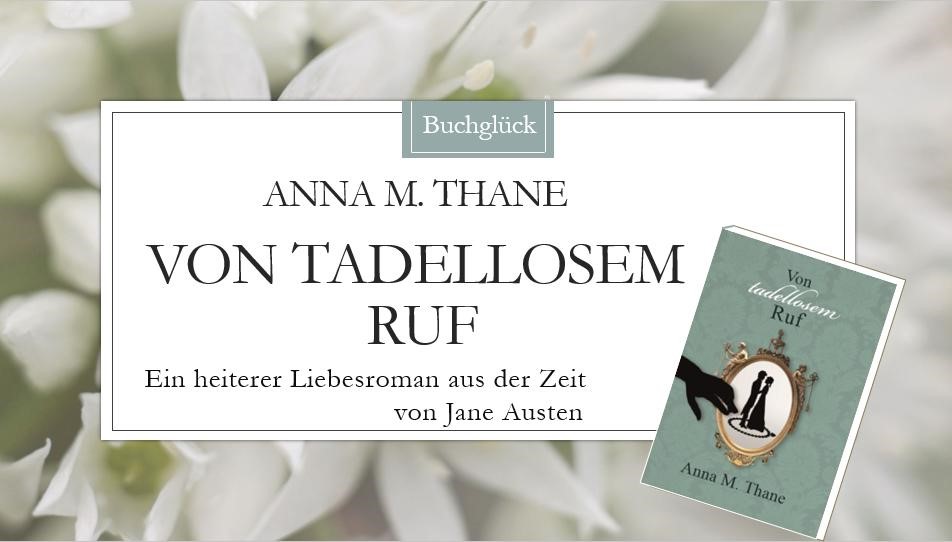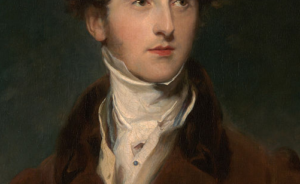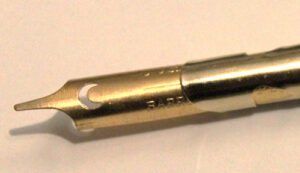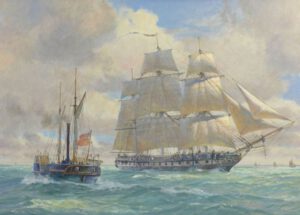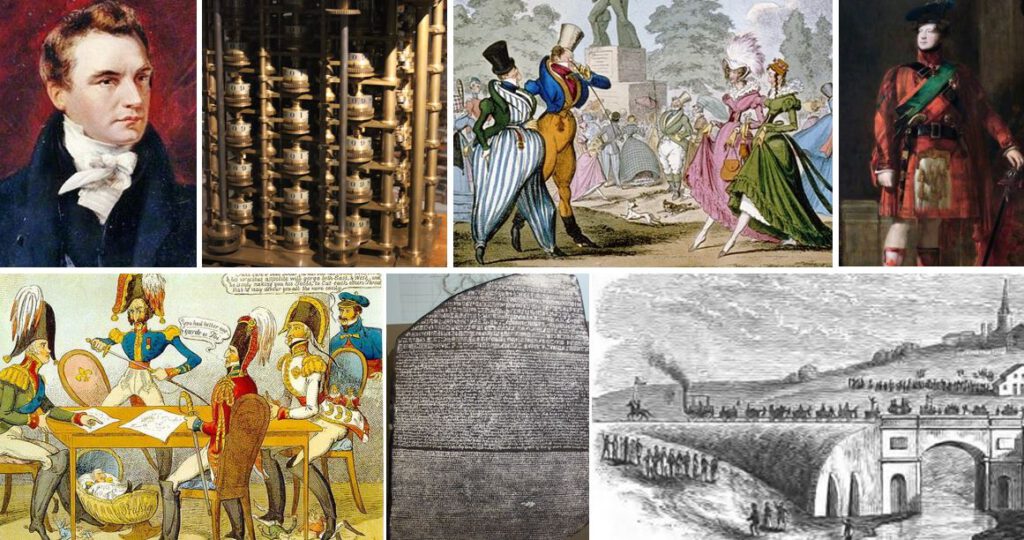 In 1822, Britain leaves the recession of the post-war period. The Napoleonic Wars had cost the nation an estimated £83 billion in modern terms – it is the most expensive war so far. The country’s debt is almost 200% of its GDP in 1822; this, however, is already better than in 1819, when the debt peaked at around 260 percent of the GDP.
In 1822, Britain leaves the recession of the post-war period. The Napoleonic Wars had cost the nation an estimated £83 billion in modern terms – it is the most expensive war so far. The country’s debt is almost 200% of its GDP in 1822; this, however, is already better than in 1819, when the debt peaked at around 260 percent of the GDP.
Government deficits are financed either by short‐term Exchequer Bills, or by long‐term financing as perpetual bonds, with annual interest rates about 5, respectively 3, percent. This system of financing brings important benefits: With the return of peace, their prices would rise, adding to the bondholders’ wealth in this way. This money then provides much of the finance underpinning for the “take‐off ”-stage of the Industrial Revolution.
Economic grows begins to pick up pace. The general price level falls. Additionally, reforms for free trade start. Britain sees some prosperity.
Find out more about innovations, fashion, celebrities, and social news of this exiting year in England.
Smile! Your photo is taken!
 Photography is invented with the first photograph taken by Joseph Nicéphore Niépce. He uses a camera obscura to capture images that were exposed onto bitumen-coated pewter plates. Exposures often take hours due to the limited light-sensitivity of available materials.
Photography is invented with the first photograph taken by Joseph Nicéphore Niépce. He uses a camera obscura to capture images that were exposed onto bitumen-coated pewter plates. Exposures often take hours due to the limited light-sensitivity of available materials.
Brighton’s long-lasting construction site is finally finished
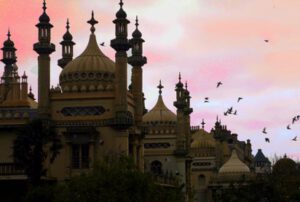 The construction of the Royal Pavilion in Brighton is completed. Building had started in 1787. John Nash had directed the works since 1815, redesigning and greatly extending the Pavilion. It is his work that is still visible today.
The construction of the Royal Pavilion in Brighton is completed. Building had started in 1787. John Nash had directed the works since 1815, redesigning and greatly extending the Pavilion. It is his work that is still visible today.
Colour, lace and curves: escape from harsh reality with a new fashion
Like economy and technology, fashion changes from the 1820ies. As counter-reaction to the harsh realities of the Industrial Revolution, the Romantic Movement emphasizes imagination, emotion, and individualism, while it rejects the ideals of logic and reason of the Enlightenment. Thus, the Empire style gives way to the Romantic style, with Gothic influences. Gone are the geometric lines and the monochromatic palette (as seen in the famous white Muslin gowns). The new exuberant fashion consists of layers of colourful pattern, rich lace, and curvaceous shapes. Fashionable hues are, e. g., a bright “Turkey red”, and richly printed calicoes dazzle the eye.
A new fascination with historicism – made fashionable i.a. by the novels of Walter Scott – permeates every aspect of dress. Fashion for women borrows ideas from the supposed costumes of Romantic heroines. Tartans are in vogue. The silhouette begins to change, too: the waistline is on the descent, skirts are slightly flared with gores at the sides and fullness gathered at the back, and puffed sleeves highlight the shoulders. Such dresses lead to the return of the corset, and with the help of waistbands and decorative belts, fashionable ladies show-off the smallest possible waist. A small down-filled pad, the bustle, adds support to the skirt.
Men’s fashion is also influenced by the Romantic spirit. Men’s clothing becomes theatrical, with exaggerated cuts such as an expansive chest, shapely legs, pronounced calves and padded coats. With regards to neckwear, George IV popularises the stock in 1822. So far, the cravat had been predominant: a large square of muslin or silk. It was folded cornerwise and tied around the neck in a variety of arrangements The stock originated in military dress. It is a stiffened band or cloth that fastens at the back with a buckle. It is worn over the narrow standing shirt collar.
January 30th: Happy 50th Birthday to Godfrey Higgins
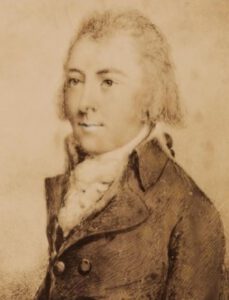 Godfrey Higgins (1772 – 1833) is a magistrate and a prominent advocate for social reform. He exposes the scandalous treatment of pauper lunatics, and campaigns for Parliamentary Reform, criticizing excessive taxation, the Corn Laws, and the exploitation of children in factories. In 1814 he had a major role in uncovering the abuse of patients at the York Lunatic Asylum after rumours of serious misconduct had come to his attention.
Godfrey Higgins (1772 – 1833) is a magistrate and a prominent advocate for social reform. He exposes the scandalous treatment of pauper lunatics, and campaigns for Parliamentary Reform, criticizing excessive taxation, the Corn Laws, and the exploitation of children in factories. In 1814 he had a major role in uncovering the abuse of patients at the York Lunatic Asylum after rumours of serious misconduct had come to his attention.
Steel-point pens for the mass market and an innovative pencil for writing
Sampson Mordan and John Isaac Hawkins invent the first propelling (or mechanical) pencil. The first propelling pencil has a mechanism that propelled the lead (or core), and the lead could be replaced.
Additionally, the steel-point pen hits the mass market, ending the reign of the quill. Steel-points pen are known for a while, but John Mitchell from Birmingham develops machine-made steel-point pens on a mass scale. These are still ink pens and function in the same way as the quill, but while they still have to be dipped into ink, they are sturdier and much less expensive. Read all about the steel pen here: https://regency-explorer.net/origin_1/
April 18th: Happy 50th Birthday to David Ricardo
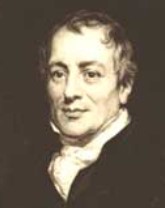 David Ricardo (1772 – 1823) is one of the most influential of the classical economists along with Thomas Malthus, Adam Smith and James Mill. His ideas have a tremendous influence on later developments in economics. Ricardo’s most famous work is “Principles of Political Economy and Taxation” (1817). He is also an abolitionist, speaking at a meeting of the Court of the East India Company in March 1823, where he will say that he regards slavery as a stain on the character of the nation.
David Ricardo (1772 – 1823) is one of the most influential of the classical economists along with Thomas Malthus, Adam Smith and James Mill. His ideas have a tremendous influence on later developments in economics. Ricardo’s most famous work is “Principles of Political Economy and Taxation” (1817). He is also an abolitionist, speaking at a meeting of the Court of the East India Company in March 1823, where he will say that he regards slavery as a stain on the character of the nation.
More music!
The Royal Academy of Music is established in London, making it the oldest conservatoire in Britain. The founding of the academy is supported by the Duke of Wellington. He used to be a keen violinist himself. Now, he is determined to make the academy a success.
May 20th: Happy 50th Birthday to William Congreve
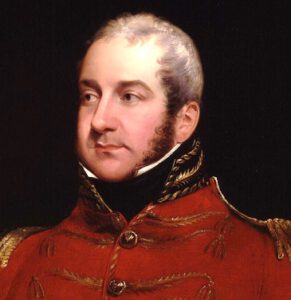 Sir William Congreve (1772 – 1828) is an inventor and rocket artillery pioneer. His “Congreve rockets” were used in the later stage of the Napoleonic Wars, with the most important employment of the weapon being at the Battle of Leipzig in 1813. The “rockets’ red glare” in the American national anthem describes their firing at Fort McHenry during the War of 1812. Not all of Congreve’s inventions are deadly: In 1814 he organised the impressive firework displays in London for the peace of 1814, and in 1821 his fireworks added to the splendour of the coronation of George IV in 1821. Also in 1821, Congreve invented a method of colour printing to counteract the dramatic escalation in the counterfeiting of paper currency. The Congreve Patent was used by the New England Bank Note Company in the US.
Sir William Congreve (1772 – 1828) is an inventor and rocket artillery pioneer. His “Congreve rockets” were used in the later stage of the Napoleonic Wars, with the most important employment of the weapon being at the Battle of Leipzig in 1813. The “rockets’ red glare” in the American national anthem describes their firing at Fort McHenry during the War of 1812. Not all of Congreve’s inventions are deadly: In 1814 he organised the impressive firework displays in London for the peace of 1814, and in 1821 his fireworks added to the splendour of the coronation of George IV in 1821. Also in 1821, Congreve invented a method of colour printing to counteract the dramatic escalation in the counterfeiting of paper currency. The Congreve Patent was used by the New England Bank Note Company in the US.
May 23rd: Steam for the Navy
The HMS Comet is launched, the first steamboat commissioned by the Royal Navy. The ship was built at the yards in Deptford by Boulton, Watt & Co, the famous steam engineers. It makes 13.9 km/h and has a length of 35.1 m overall. HMS Comet is not to be employed in action in the 1820ies. Her task is to tow ships out of harbour when there is not enough wind to allow them to move by themselves. The ship still has a two-mast schooner rig besides the twin cylinder side-lever engine. HMS Comet comes to see deeper water when the scientist Humphry Davy travels to Norway on board of it in 1824.
May 24th: Steam for the colliery railway
The first rail of the Stockton and Darlington Railway is laid in ceremonial style at Stockton-on-Tee. The Stockton and Darlington Railway, connecting collieries, is the world’s first public railway to use steam locomotives. George and Robert Stephenson are heavily involved in the project. It’s now just 3 more years to wait until the line opens.
June 12th: Honours to the engineers!
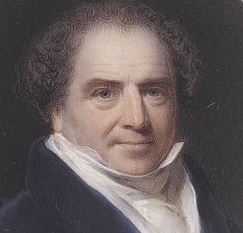 Edward Banks (1770 – 1835), civil engineer and pioneer of steam ships, is knighted. It is the first such honour for a work in civil engineering. He built i.a. Waterloo bridge and Southwark bridge in London.
Edward Banks (1770 – 1835), civil engineer and pioneer of steam ships, is knighted. It is the first such honour for a work in civil engineering. He built i.a. Waterloo bridge and Southwark bridge in London.
July 3rd: The prototype of the computer is invented
Charles Babbage conceptualises the Difference Engine, and begins developing the prototype of our computer. This first automatic computing engine is capable of computing several sets of numbers and making hard copies of the results. Babbage’s work shall never be completed because of a lack of funding. Read here more about computing in the 18th century: https://regency-explorer.net/computers/
July 8th: Death of a poet
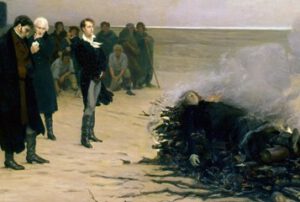 Poet Percy Bysshe Shelley (b. 1792) dies when the ship he had embarked on sank in a storm. On July 18, his body is washed up on the beach near Viareggio / Italy. Percy Bysshe Shelley was travelling from Livorno to Lerici. His body is cremated on the beach in the presence of Lord Byron.
Poet Percy Bysshe Shelley (b. 1792) dies when the ship he had embarked on sank in a storm. On July 18, his body is washed up on the beach near Viareggio / Italy. Percy Bysshe Shelley was travelling from Livorno to Lerici. His body is cremated on the beach in the presence of Lord Byron.
July 22nd: Animal rights are born
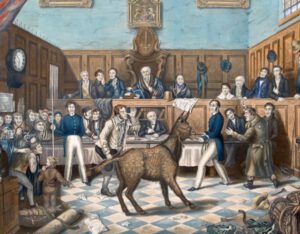 One of the first pieces of animal rights legislation, “The Act to Prevent the Cruel and Improper Treatment of Cattle” (“Martin’s Act“), is passed to regulate treatment of cows, horses and sheep. The name “Martin’s Act” derives from it’s initiator, Richard Martin (1754 – 1834), an Irish politician and campaigner against cruelty to animals. King George IV. nicknamed Martin “Humanity Dick”. Initiatives for animal rights, including a ban on dog-fighting and bull-baiting, had been defeated twice in Parliament (1800 and 1809). The first prosecution under the Martin’s Act was against a man who was found beating his donkey. Martin actually brought the donkey into court (see picture on the left).
One of the first pieces of animal rights legislation, “The Act to Prevent the Cruel and Improper Treatment of Cattle” (“Martin’s Act“), is passed to regulate treatment of cows, horses and sheep. The name “Martin’s Act” derives from it’s initiator, Richard Martin (1754 – 1834), an Irish politician and campaigner against cruelty to animals. King George IV. nicknamed Martin “Humanity Dick”. Initiatives for animal rights, including a ban on dog-fighting and bull-baiting, had been defeated twice in Parliament (1800 and 1809). The first prosecution under the Martin’s Act was against a man who was found beating his donkey. Martin actually brought the donkey into court (see picture on the left).
July: Sir Walter Scott is given the task of his life – and time is ticking
King George plans to visit Scotland! The city council of Edinburgh invites Scott, at the sovereign’s behest, to stage-manage the Royal visit. It is quite a task: Scott has only three weeks until His Royal Majesty will arrive! He creates a spectacular, comprehensive pageant, designed to impress the King, and in some way to heal the rifts that had destabilised Scottland’s society. As Master of Ceremonies, Scott is assisted by the young actor-manager William Henry Murray (1790-1852) whose talents at theatrical scenery and costume are invaluable for creating the settings and the costumes for the pageants.
The Royal visit becomes what in modern days would be a PR event, with the King dressed in tartan and greeted by his people, many of them also in similar tartan ceremonial dress. It is this Royal visit that invents the “traditional Highland dress” we know today as a symbol of Scottish identity – it is but a fancy of Scott and his assistant W. H. Murray, but nevertheless, it succeeds in starting a new fashion.
Producing all the tartans cost £120,000. The splendid red and gold pattern hasn’t much in common with the original form of Highland dress, which was a rough and substantial swathe of material worn with a belt and doubling as a blanket for protection against cold and rain.
Scott also cares for the etiquette on the days of the Royal visit. He produces a booklet “Hints addressed to the inhabitants of Edinburgh and others in prospect of His Majesty’s Visit“. It outlines the planned events and gives detailed advice on behaviour and clothing: All gentlemen of the city are expected to dress in public in a uniform blue coat, white waistcoat and white or nankeen cotton trousers, and a low-crowned dark hat decorated with a cockade in the form a white St. Andrew’s saltire on a blue background. If you are among the fortunate gentlemen to attend functions or levees, you are to wear a full dress suit. For the Peers’ Grand Ball, you have to appear in the “ancient” Highland costume. The Grand Ball is pivotal in making the tartan kilt the national dress of Scotland.
August 5th: How a doctor nearly kills the Duke of Wellington
Wellington, as Master-General of the Ordnance, had been close to a large explosion caused by artillery. As a consequence, he experiences deafness and other ear-related problems. On this fatal day in August, Wellington undergoes an operation to improve the hearing of the left ear. This, however, goes terribly wrong: The treatment by his doctor causes a furious, dangerous inflammation, extending to the brain. Thanks to the doctors Sir Henry Halford and Sir Astley Cooper which are called to help, Wellington can be saved from death. Hearing is gone though, and Wellington later said that he was “never quite well afterwards”.
August 12th: Death of a statesman
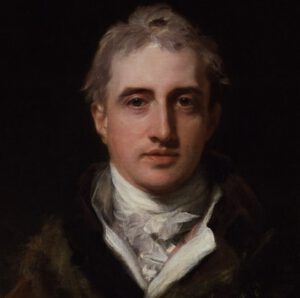 Robert Stewart, Viscount Castlereagh (b. 1769), foreign secretary from 1812, commits suicide, probably because of overwork and personal distress.
Robert Stewart, Viscount Castlereagh (b. 1769), foreign secretary from 1812, commits suicide, probably because of overwork and personal distress.
Castlereagh organised and financed the alliance that defeated Napoleon, bringing the powers together at the Treaty of Chaumont in 1814. In 1815, he was present at the Congress of Vienna to frame the territorial Continental order. In Britain, Castlereagh supported repressive measures.
August 15th –29th: The King’s visit to Scotland
King George IV is the first reigning monarch to visit Scotland in nearly two centuries. His government ministers had pressed him to go on the tour of Scotland to divert the King from diplomatic intrigue at the Congress of Verona. It turns out to be a happy idea: The visit increased the King’s popularity in Scotland, turning some subjects away from the rebellious radicalism of the time.
It is a huge PR event: George IV is presented as a new Jacobite King, with the logic that he is by bloodline as much a Stuart as Bonnie Prince Charlie had been. Sir Walter Scott organises the visit, and creates splendid pageants and a display of tartan kilt which becomes part of Scotland’s national identity.
George IV takes the chance to go shopping: for £1,354 18s (£130,000 today) he buys a Highland outfit in bright red Royal Tartan, later known as Royal Stuart, complete with gold chains and assorted weaponry including dirk, sword and pistols.
Watch a video about it here: https://www.facebook.com/royalcollectiontrust/videos/george-ivs-visit-to-scotland/2473692579359575/
The King’s ship, the Royal George, arrives in the Firth of Forth on 14 August. A torrential downpour prevents the landing. Despite the rain Sir Walter Scott rows out to see the King. He is thanked with a drink of whisky (legend has it that Scott manages to smuggle the empty glass off the ship as a souvenir, but unfortunately sits on it on the way back so that he ends up with broken pieces). On board of the Royal George, Scott presents to the King a jewel designed and embroidered by the ladies of Edinburgh, in the form of a silver St Andrews cross.
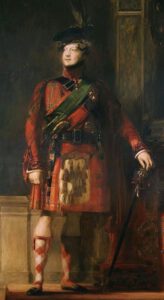 The sun is back the next day, so the king steps ashore, beginning his visit which includes many pageantries. The King makes his last and least formal public appearance on 27 August, watching a theatre performance of Scott’s Rob Roy, adapted and produced by William Henry Murray. The Royal visit ends on 29 August with a brief visit to Hopetoun House. It rains again, yet crowds waits there to see the King.
The sun is back the next day, so the king steps ashore, beginning his visit which includes many pageantries. The King makes his last and least formal public appearance on 27 August, watching a theatre performance of Scott’s Rob Roy, adapted and produced by William Henry Murray. The Royal visit ends on 29 August with a brief visit to Hopetoun House. It rains again, yet crowds waits there to see the King.
Occasionally, the King’s dress causes a stir. When he wears his Highland outfit complete with pink pantaloons made to look like skin, there are complains that the kilt is too short for modesty. Lady Hamilton-Dalrymple wittily responds: “Since he is to be among us for so short a time, the more we see of him the better.” Nevertheless, wearing the newly invented “ancient Scottish national dress” becomes a fashion. The King’s visit also sparks tourism to Scotland.
August 25th: Death of the star gazer
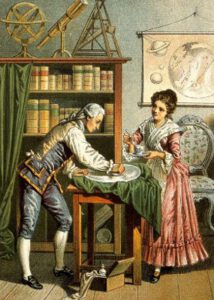 William Herschel (b. 1738) dies. He began to look at the planets and the stars in May 1773, and constructed the first large telescope in 1774. He became a leading astronomer of the age. He discovered the planet Uranus, which he called “Georgian star” (Georgium sidus) after King George III. In 1782, Herschel was appointed “The King’s Astronomer”.
William Herschel (b. 1738) dies. He began to look at the planets and the stars in May 1773, and constructed the first large telescope in 1774. He became a leading astronomer of the age. He discovered the planet Uranus, which he called “Georgian star” (Georgium sidus) after King George III. In 1782, Herschel was appointed “The King’s Astronomer”.
September 11th: Happy 60th Birthday to Joanna Baillie
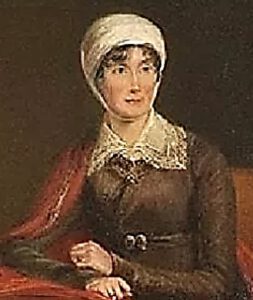 Joanna Baillie (1762 – 1851), a Scottish poet and dramatist, is a celebrated writer that many of her contemporaries place above most women poets. Others even say she that she is second only to Shakespeare.
Joanna Baillie (1762 – 1851), a Scottish poet and dramatist, is a celebrated writer that many of her contemporaries place above most women poets. Others even say she that she is second only to Shakespeare.
Baillie has intelligence and integrity allied with an accurate observance of human nature. She offers a new way of looking at drama and poetry. Her works are translated into Singhalese and German, and her plays are performed widely in both the United States and Britain. Financially secure herself, she customarily gives half her earnings from writing to charity, and engages in many philanthropic activities. Her most popular work is “Plays on the Passions” (three volumes, 1798–1812).
September 27th: Egyptian hieroglyphs are no longer a mystery
Jean-François Champollion (1790 – 1832) announces he had deciphered Egyptian hieroglyphs. He succeeded in doing so using the Rosetta Stone, a stele inscribed with three versions of a decree issued in Memphis/Egypt. He also based his work on the researches by polymath Thomas Young, and the traveller and Egyptologist William John Bankes. In 1814, Champollion and Young had first exchanged correspondence about the Rosetta Stone. In 1822, Champollion saw copies of the brief hieroglyphic and Greek inscriptions of the Philae obelisk owned by Bankes, on which Bankes had tentatively noted the names “Ptolemaios” and “Kleopatra” in both languages. On the basis of this and the foreign names on the Rosetta Stone, Champollion constructed an alphabet of phonetic hieroglyphic characters. Young will never recognise Champollion’s claim, and Bankes is appalled that Champollion keeps the fame for himself.

From left to right: Jean-François Champollion, The Rosetta Stone, Thomas Young, the Philae obelisk, William John Bankes
October 13th: Death of The Neoclassical Artist
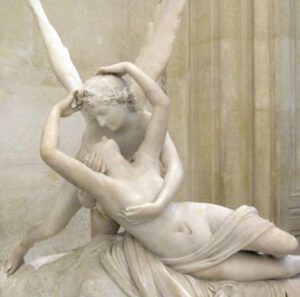 Antonio Canova (b. 1757) was famous for his marble sculptures. By 1800, he was the most celebrated artist in Europe, with Napoleon as one of his patrons. The most notable sculpture was “Napoleon as Mars” (1806). It was owned by the Duke of Wellington from 1815, after his victory at Waterloo against Napoleon. The sculpture is still on display at Apsley House.
Antonio Canova (b. 1757) was famous for his marble sculptures. By 1800, he was the most celebrated artist in Europe, with Napoleon as one of his patrons. The most notable sculpture was “Napoleon as Mars” (1806). It was owned by the Duke of Wellington from 1815, after his victory at Waterloo against Napoleon. The sculpture is still on display at Apsley House.
October 21st: Happy 50th Birthday to Samuel Taylor Coleridge.
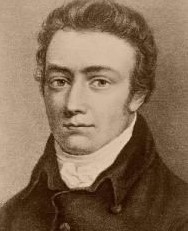 The poet, literary critic and political thinker (1772 – 1834) is one of the founders of the Romantic Movement in England and a member of the Lake Poets. His most popular works include “The Rime of the Ancient Mariner”, “Christabel”, and “Kubla Khan”.
The poet, literary critic and political thinker (1772 – 1834) is one of the founders of the Romantic Movement in England and a member of the Lake Poets. His most popular works include “The Rime of the Ancient Mariner”, “Christabel”, and “Kubla Khan”.
October 23rd–24th: Caledonian Canal opened
The Caledonian Canal, linking the east and west coasts of Scotland, is finally opened. It was engineered by Thomas Telford. The project had begun in 1803, and cost £910,000. Over 3,000 people had been employed in its construction. The canal ended the hazardous journey of ships around the north of Scotland via Cape Wrath and the Pentland Firth.
October–December: The last of the Congresses
The Congress of Verona (Oct. 20 – Dec. 14) is the last of the meetings held by Russia, Prussia, Austria, and Britain in the aftermath of the Napoleonic Wars. It is held mainly to consider the revolutionary situation in Spain. Russia, Austria and Prussia approve a French intervention in Spain. Britain, represented by the Duke of Wellington, fails in the diplomatic mission to heal dissension among the European allies, and creates enough discord among the allies to cause a breakdown in the congress system.
November 18st: First colliery railway successful under steam
Opening of the privately owned Hetton colliery railway, the first railway to be designed from the start to be operated without animal power. It was developed by the pioneering railway engineer George Stephenson. His son Robert, aged only 19, oversaw the construction.
December 24st:”The Night Before Christmas” is written
Clement Moore’s poem, “A Visit from St. Nicholas”, is popularly known as “The Night Before Christmas”. Moore (1779 – 1863) creates the poem while traveling home from Greenwich Village / New York City, where he had bought a turkey for his family’s Christmas dinner. He shares the poem that very evening with his six children.
Are you interested in the literary events of 1822? Read all about them here:
Related articles:
Sources
- Philip Brien: From revolution to recession: 300 years of public finances; at: https://commonslibrary.parliament.uk/from-revolution-to-recession-300-years-of-public-finances/
- Martin Hutchinson and Kevin Dowd: The Economic Policies of Lord Liverpool; at: https://www.cato.org/cato-journal/fall-2021/economic-policies-lord-liverpool#war-finance
- SmugMug: When was photography invented? A brief timeline of photographic history; at: https://news.smugmug.com/when-was-photography-invented-a-brief-timeline-of-photographic-history-f883c79c405f
- History of the Mechanical Pencil – Inventor of Mechanism; at: http://www.historyofpencils.com/writing-instruments-history/history-of-mechanical-pencils/
- The Journal shop: The history of pens; at: https://www.thejournalshop.com/thejournal/history-of-pens/
- Gareth Davies: King George IV and the Birth of Scottish Tourism; at: https://www.edinburghexpert.com/blog/king-george-iv-and-the-birth-of-scottish-tourism
- H. Dominic W. Stiles: “but being deaf, the Spirit not the Body tires” – the Duke of Wellington’s Hearing Loss; at: https://blogs.ucl.ac.uk/library-rnid/2019/05/03/but-being-deaf-the-spirit-not-the-body-tires-the-duke-of-wellingtons-hearing-loss/
- Harper Franklin (Fashion Institute of Technology): Fashion History Timeline 1820-1829; at: https://fashionhistory.fitnyc.edu/1820-1829/
- Aimee Lucido: Dec 24 1822, “The Night Before Christmas” Is Written; at: https://worldhistoryproject.org/1822/12/24/the-night-before-christmas-is-written
- The Editors of Encyclopaedia Britannica: Congress of Verona, European history; at: https://www.britannica.com/event/Congress-of-Verona
- Mark Wallis: Ahead by a Neck; at: http://www.pastpleasures.co.uk/blog/?p=1135
- www.wikipedia.com
Article by Anna M. Thane, author of the novel
“Von tadellosem Ruf” (http://amzn.to/2TXvrez)
